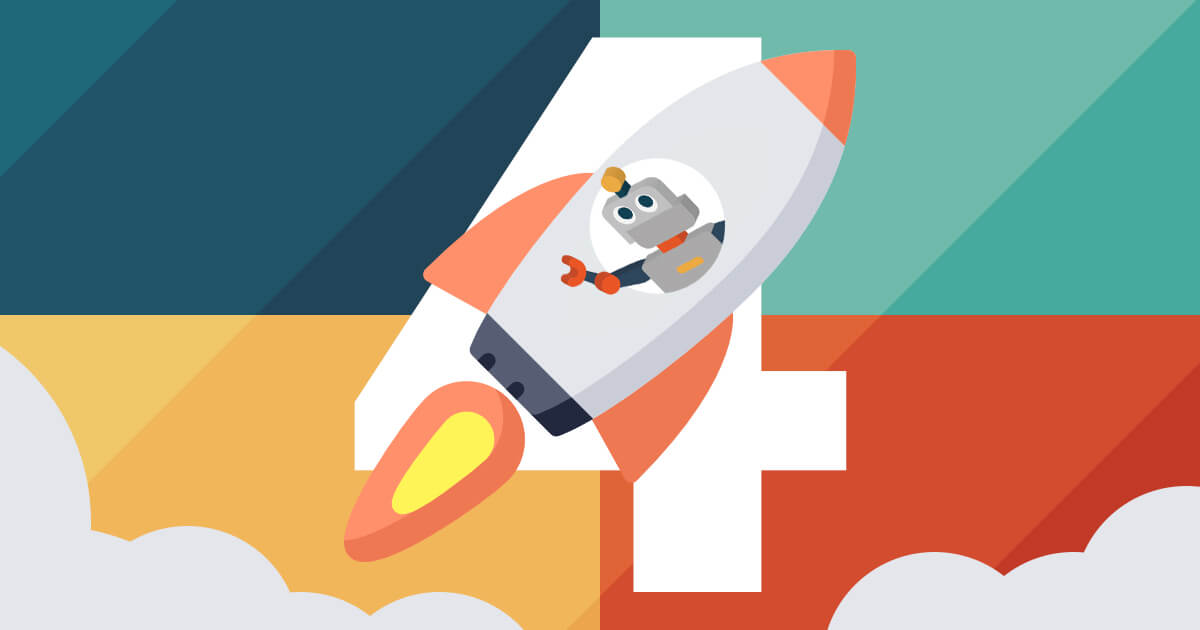
Marketing strategies in Q4 call for both foresight and reflection.
We’re in the final stretch of 2024. This is the moment to strike a balance between looking ahead and appreciating how far you’ve come.
Being a forward-thinking marketer means staying ahead of trends, but it’s also about tapping into the data and insights you’ve gained to build on your success. This dual approach ensures you’re not just riding the wave of momentum but setting yourself up for even bigger wins.
Our experts are here to share how combining forward-looking planning with thoughtful reflection can help you end 2024 on a high note and start the new year stronger than ever.
Let’s explore four key marketing automation strategies to supercharge your results in Q4.
1. Optimizing Marketing-Sales Alignment
Now, it’s more important than ever to align your sales and marketing teams. When these two teams have good synergy, it can make a world of difference in your business growth.
We’ll walk through some key automation strategies in digital marketing that can help bring this alignment to life.
Lead Scoring Automation
Lead scoring automation is a game-changer when it comes to focusing your sales team’s energy on leads that are ready to convert.
By assigning values to your prospects based on how likely they are to buy, you can help your team zero in on the most promising opportunities. Start by defining your ideal customer profile (ICP) and using that as a guide to build your lead scoring model.
From there, keep an eye on the data, experiment with different algorithms, and adjust as new information comes in.
With the right setup, your sales team can focus on leads that are hot, boosting your chances of closing more deals.
Automated Sales Notifications
Timing is everything in sales. Automated notifications can ensure your team never misses a prime opportunity.
By setting up alerts for when a lead hits a certain score or takes a specific action (like visiting your pricing page), you give your sales reps a heads-up that it’s time to reach out. With these notifications in place, your team can act quickly and seal the deal while interest is high.
Closed-Loop Reporting
Closed-loop reporting ties your marketing efforts directly to revenue, offering clear insights into what’s working and what’s not.
When you integrate your marketing automation platform with your CRM, you can track leads from the first touchpoint to the final conversion. This way, both teams stay in sync, making data-driven decisions that keep the focus on growth.
2. Leveraging Automated Social Listening
Automated social listening is a must-have tool for staying connected to your audience and staying on top of trends. It helps you tap into what your audience is talking about, allowing you to fine-tune your marketing efforts based on real-time insights.
Tracking Brand Mentions
One of the big perks of automated social listening is tracking brand mentions across different platforms. With the right filters in place, you get notified whenever your brand or relevant keywords pop up. This allows you to react quickly—whether it’s addressing feedback or jumping on positive mentions to boost your brand image.
Real-time brand monitoring means you can tackle criticism head-on and take advantage of good press. This quick action can do wonders for your reputation and help you stay connected with your audience. Plus, all the ongoing feedback becomes a goldmine for shaping future PR strategies.
Spotting Trending Topics
Social listening tools are perfect for spotting trending topics by analyzing what’s being talked about online—including your competitors. With real-time data in hand, you can adapt your marketing quickly and ensure you’re showing up where it counts.
One great way to track trends is by following popular hashtags across relevant platforms, whether it’s Instagram or LinkedIn. These hashtags give you a front-row seat to the conversations that matter most.
Sentiment Analysis
Sentiment analysis is another key part of social listening, using AI to analyze how people feel about your brand or products. This gives you a clear picture of what’s resonating and what’s not. You can use this data to detect issues early on and make quick adjustments.
By categorizing feedback into positive, neutral, or negative, sentiment analysis allows you to see how opinions about your brand are shifting over time. If there’s a spike in negative mentions, you can step in before things get out of hand.
When you choose a social listening tool, make sure it has robust sentiment analysis capabilities that can give you accurate insights into how people feel about your brand.
3. Implementing Cross-Sell and Upsell Automation
These are two tactics you don’t want to ignore—especially if you are a B2C business approaching Black Friday/Cyber Monday (BFCM) weekend.
Cross-sell and upsell automation tactics can drive more revenue, boost Customer Lifetime Value (CLV), and help you stand out in a competitive market. Here’s how:
Personalized Product Recommendations
Personalized product recommendations create a tailored shopping experience by suggesting items that match each customer’s preferences.
Whether it’s based on browsing behavior, past purchases, or their favorite categories, this strategy brings customers back to your product pages to explore more.
Here are a few ways to personalize product recommendations:
- Suggestions based on browsing history
- Recommendations from previous purchases
- Frequently bought together items
- New arrivals in their preferred categories
- Trending items that match their size or style
By adding these personalized recommendations to your emails, you can increase engagement and lift the average order value at every touchpoint.
Automating Post-Purchase Follow-Ups
Post-purchase follow-ups are key to nurturing customer loyalty. These emails encourage customers to return for more, promote re-orders, and gather valuable feedback.
When done right, they can also lay the groundwork for cross-selling or upselling opportunities.
Klaviyo reports that post-purchase emails tend to get open rates nearly 17% higher than regular automated emails.
To get the most out of your follow-ups, consider including:
- Info about your brand and product benefits
- Reasons why choosing your business was the right move
- Cross-sell or upsell offers for related items
- Incentives for their next purchase
Implementing Cart Abandonment Strategies
Cart abandonment happens all the time, but it’s also a chance to win back potential customers. According to Omnisend, cart abandonment emails had a 2.7% conversion rate in 2023, making them one of the most effective email automations out there.
Here’s a simple approach to tackling cart abandonment:
- Send three emails:
- A reminder (1 hour after abandonment)
- Emphasize product scarcity or value (12 hours after abandonment)
- Add urgency with an incentive (24 hours after abandonment)
- Use subject lines that grab attention with words like “forgot,” “left,” or “still.”
- Include images of the abandoned products to remind customers what they’re missing.
- Provide customer support to answer any last-minute questions.
- Consider offering a quiz to help hesitant shoppers make confident decisions.
By integrating these cross-sell and upsell strategies, you’ll supercharge your marketing efforts and achieve meaningful results as you wrap up 2024.
4. Enhancing Customer Onboarding Automation
Optimizing your customer onboarding process is a key part of any marketing automation strategy and can significantly elevate your Q4 2024 performance.
A smooth onboarding experience helps boost customer satisfaction and retention. It also sets your business up for long-term success.
Automated Welcome Series
Your welcome series is a chance to make a lasting first impression. When someone signs up for your product or service, they’re eager to engage with your brand, so it’s important to start off strong.
Here’s how to create a welcome series that makes an impact:
- Timing is everything: Send the first welcome email immediately after signup to confirm their subscription and keep your brand top of mind.
- Keep it simple: Don’t overload new customers with too much info. Focus on providing value and setting expectations for what’s next.
- Personalize it: Use the data collected during signup to make your messages feel tailored to each subscriber.
- Guide them: Clearly outline the next steps, helping them quickly find value in your product or service.
Product Usage Triggers
Product usage triggers are another smart way to level up your onboarding process.
These automated messages are sent when users hit specific milestones or, conversely, when they’re not engaging with your product. This keeps users on track and helps them get the most out of their experience.
Consider using triggers like these:
- Milestone celebrations: Congratulate users when they complete key actions or hit important milestones.
- Inactivity prompts: Re-engage users who haven’t logged in or used certain features within a set time.
- Feature introductions: Showcase advanced or lesser-known features as users become more comfortable with your product.
- Upgrade suggestions: Offer premium features or plan upgrades when users reach usage limits or show high engagement.
Automated Customer Feedback Collection
Getting feedback from new customers is crucial to improving your onboarding process and overall user experience. Automating this step ensures you gather valuable insights without overwhelming your team.
Here’s how to automate feedback collection effectively:
- Timing matters: Send feedback requests at key moments, like after completing the setup or using a core feature.
- Keep it short: Use quick, focused surveys that are easy for customers to complete.
- Act on it: Set up workflows to ensure the right teams review and act on the feedback.
- Follow up: Automatically thank customers for their feedback and share any improvements you’ve made based on their suggestions.
Get Support from Certified Marketing Automation and CRM Consultants
By implementing the automation strategies we shared, you’ll set yourself up for long-term success.
Our team at MAC is ready to help you stay ahead in a competitive landscape, respond quickly to customer needs, and maximize your revenue potential.
Ready to finish 2024 strong and lay the groundwork for continued growth in the New Year? Contact us for a consultation to learn how we can support your business objectives.


